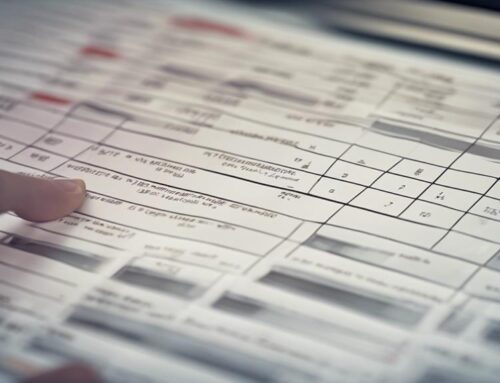When entering appraisal data, focus on precision for accurate and reliable information. Validate accuracy and use error prevention methods to ensure data integrity. Regular audits and spot checks aid in error identification and correction. Verify each entry meticulously before finalizing to minimize inaccuracies. Implementing automation tools can improve efficiency and streamline processes. Ensure data quality standards by conducting accuracy checks and error detection techniques. Consistency in data entry formatting is crucial for error reduction. Timeliness is key for decision-making processes. Validation checks play a critical role in maintaining data integrity and reliability. Effective audit trails enhance data security and accountability. These best practices enhance your appraisal data entry processes.
Importance of Accuracy
Ensuring precision in appraisal data entry is crucial for maintaining the integrity and reliability of the information stored. Accuracy validation plays a vital role in guaranteeing that the data entered is correct and free from any discrepancies. By implementing measures for error prevention, such as data validation checks and double-entry verification processes, you can significantly reduce the likelihood of inaccuracies in the system.
Error prevention strategies are essential in appraisal data entry to uphold the quality and credibility of the information. Conducting regular audits and spot checks can help identify and rectify any errors promptly. Verifying the accuracy of each entry before finalizing it in the system is a fundamental practice that minimizes the risk of inaccuracies slipping through.
Enhancing Efficiency in Data Entry
To optimize the efficiency of data entry processes, streamlining input procedures and utilizing automation tools can significantly enhance productivity and accuracy. Automation solutions offer a way to expedite repetitive tasks, reducing the time required for manual data entry. By implementing automation tools such as data extraction software or optical character recognition (OCR) technology, you can streamline processes and eliminate the need for manual data input, saving valuable time and improving accuracy.
Moreover, streamlining processes involves identifying bottlenecks or inefficiencies in your current data entry methods and implementing changes to make the workflow more efficient. This could include simplifying forms, standardizing data entry formats, or providing training on shortcut keys and software functionalities. By optimizing the data entry process, you can increase the speed at which information is entered while minimizing errors.
Ensuring Data Quality Standards
To ensure data quality standards, you must implement data accuracy checks to verify the correctness of the entered information. Quality assurance measures should be in place to guarantee that data meets predefined standards. Utilizing error detection techniques can help identify and rectify any inconsistencies or inaccuracies in the appraisal data.
Data Accuracy Checks
Maintaining precision in data input is vital to upholding data quality standards in the appraisal process. Data accuracy checks are crucial for ensuring reliable information. Through data validation, you can verify that the entered data meets specific criteria and formats. This step is essential in identifying any inaccuracies or inconsistencies early on. Accuracy assessment involves comparing the entered data with reliable sources or previously recorded information to confirm its correctness. By implementing thorough accuracy checks, you can minimize errors and enhance the overall quality of the data. Ensuring that data is accurate from the start saves time and resources by preventing the need for extensive corrections later in the appraisal process.
Quality Assurance Measures
Ensuring high-quality data standards involves implementing robust quality assurance measures throughout the appraisal process to uphold the integrity and reliability of the information collected. Accuracy validation is a crucial aspect of quality assurance, where data is checked and verified to ensure its correctness. This process helps in identifying and rectifying any discrepancies or errors that may have occurred during data entry. Additionally, maintaining data consistency is vital to ensure that the information is uniform and coherent across all entries. By establishing stringent quality assurance measures, such as regular audits and cross-checking procedures, you can enhance the overall quality of the data being entered, leading to more accurate and reliable appraisal outcomes.
Error Detection Techniques
Implementing effective error detection techniques is crucial for maintaining high data quality standards in the appraisal process. Error prevention strategies are essential to minimize inaccuracies in the data entry. Utilizing data validation tools ensures that the information entered meets specific criteria and formats, reducing the likelihood of errors. By incorporating validation rules such as range checks, format checks, and consistency checks, you can identify and correct errors promptly. Automated validation processes streamline error detection, flagging discrepancies in real-time for immediate resolution. Regularly reviewing and refining these error detection techniques enhances the overall quality of the data captured during the appraisal, fostering trust in the appraisal process and the resulting outcomes.
Maintaining Consistency in Appraisal Data
To ensure the integrity of your appraisal data, it is crucial to maintain consistency in how information is entered. By adhering to standardized formatting guidelines, you can avoid discrepancies and errors that may arise from inconsistent data input. Consistency not only enhances the accuracy of your data but also streamlines the appraisal process, making it more efficient and reliable.
Data Accuracy Importance
Maintaining consistency in appraisal data is crucial for ensuring accurate evaluations and reliable decision-making processes. When it comes to data accuracy, the following points are essential:
- Data Validation: Implementing thorough validation processes helps catch errors and inconsistencies early on, ensuring that the data entered meets the required standards.
- Error Prevention: By maintaining consistency in data entry practices, you can reduce the likelihood of errors creeping into the system, thus enhancing the overall accuracy of the appraisals.
- Regular Audits: Conducting frequent audits of the data entered can help identify any discrepancies or outliers, allowing for timely corrections to be made.
- Training and Guidelines: Providing proper training on data entry protocols and guidelines ensures that all individuals involved in the process adhere to the same standards, promoting consistency and accuracy.
Standardized Formatting Guidelines
Consistency in formatting guidelines is paramount for ensuring the uniformity and accuracy of appraisal data entries. Formatting consistency plays a crucial role in data validation processes, where standardized formats enable efficient comparison and analysis. By adhering to specific guidelines for data entry, you facilitate quality assurance mechanisms and enhance error detection capabilities. Consistent formatting aids in streamlining the appraisal data entry process, reducing the likelihood of discrepancies or inaccuracies. It ensures that all data is recorded in a structured and standardized manner, making it easier to identify and rectify any inconsistencies. Embracing standardized formatting guidelines not only promotes data accuracy but also simplifies the overall appraisal data management, ultimately leading to more reliable and valuable insights.
Timeliness in Data Entry Process
Ensuring timely entry of appraisal data is crucial for maintaining the efficiency of the overall data management process. Timeliness in data entry enhances the accuracy and effectiveness of decision-making processes. Here are four essential tips to help you improve the timeliness of your data entry process:
- Set Clear Deadlines: Establish specific deadlines for data entry tasks to create a sense of urgency and prioritize time management effectively.
- Utilize Automation Tools: Explore software solutions that offer automation features to streamline repetitive data entry tasks and reduce manual errors.
- Implement Regular Check-Ins: Schedule regular check-ins to monitor progress, identify bottlenecks, and address any issues that may be hindering the data entry process.
- Provide Adequate Training: Ensure that team members responsible for data entry receive proper training on the systems and processes involved to expedite the entry process and maintain accuracy.
Importance of Validation Checks
Validation checks play a crucial role in verifying the accuracy and integrity of appraisal data entered into the system. These checks act as safeguards against errors and ensure that the information inputted is reliable and consistent. By implementing validation checks, you can significantly reduce the risk of inaccuracies within the data, which is essential for making informed decisions based on the appraisal data.
One of the key benefits of validation checks is that they help maintain data accuracy by flagging any inconsistencies or discrepancies during the data entry process. This proactive approach allows you to catch errors early on, preventing potential issues from propagating throughout the system. Validation checks also help in maintaining data integrity by ensuring that the entered information meets specific criteria or standards set by the organization.
Implementing Effective Audit Trails
To enhance the tracking and monitoring of data modifications, establishing robust audit trails is imperative in the appraisal data entry process. Audit trails serve as a crucial component for maintaining data integrity and compliance monitoring within appraisal systems. Here are four key aspects to consider in implementing effective audit trails:
- Data Security Measures: Implementing stringent data security protocols ensures that only authorized personnel can access and modify sensitive information, enhancing overall data protection.
- Audit Trails Creation: Develop a systematic approach to record and track any changes made to the data, including details such as timestamps, user IDs, and the nature of the modifications.
- Regular Monitoring: Consistently review audit trail logs to identify any discrepancies or unauthorized alterations promptly, enabling swift corrective actions to uphold data accuracy.
- Integration with Compliance Monitoring: Align audit trail mechanisms with compliance standards to ensure that all data entry processes adhere to industry regulations and internal policies, fostering a culture of accountability and transparency.
Frequently Asked Questions
What Are the Common Challenges Faced During the Appraisal Data Entry Process?
When entering appraisal data, challenges like ensuring data accuracy and maintaining data security often arise. It’s crucial to double-check entries for accuracy and follow strict security protocols to safeguard sensitive information.
How Can Appraisers Ensure the Confidentiality of the Data Entered During the Appraisal Process?
To ensure confidentiality during the appraisal process, you must implement robust data encryption techniques and adhere strictly to confidentiality protocols. Protect sensitive information by encrypting data and following established confidentiality guidelines.
Are There Any Specific Software Tools Recommended for Efficient Data Entry in the Appraisal Industry?
In the vast digital landscape, efficient tools are your guiding stars, leading you to the treasure trove of data accuracy. Embrace software like TOTAL, ACI, or ClickFORMS for streamlined appraisal data entry.
How Do Regulatory Changes Impact the Appraisal Data Entry Process?
Regulatory changes significantly influence the data entry process, requiring adherence to updated compliance regulations. Understanding the impact of these changes is crucial for ensuring accurate and compliant data entry practices in the appraisal industry.
What Are the Best Practices for Training New Employees on Appraisal Data Entry Procedures?
When training new employees on appraisal data entry procedures, focus on interactive methods like shadowing experienced staff and hands-on practice. Emphasize the importance of data accuracy from the start to instill good habits.




